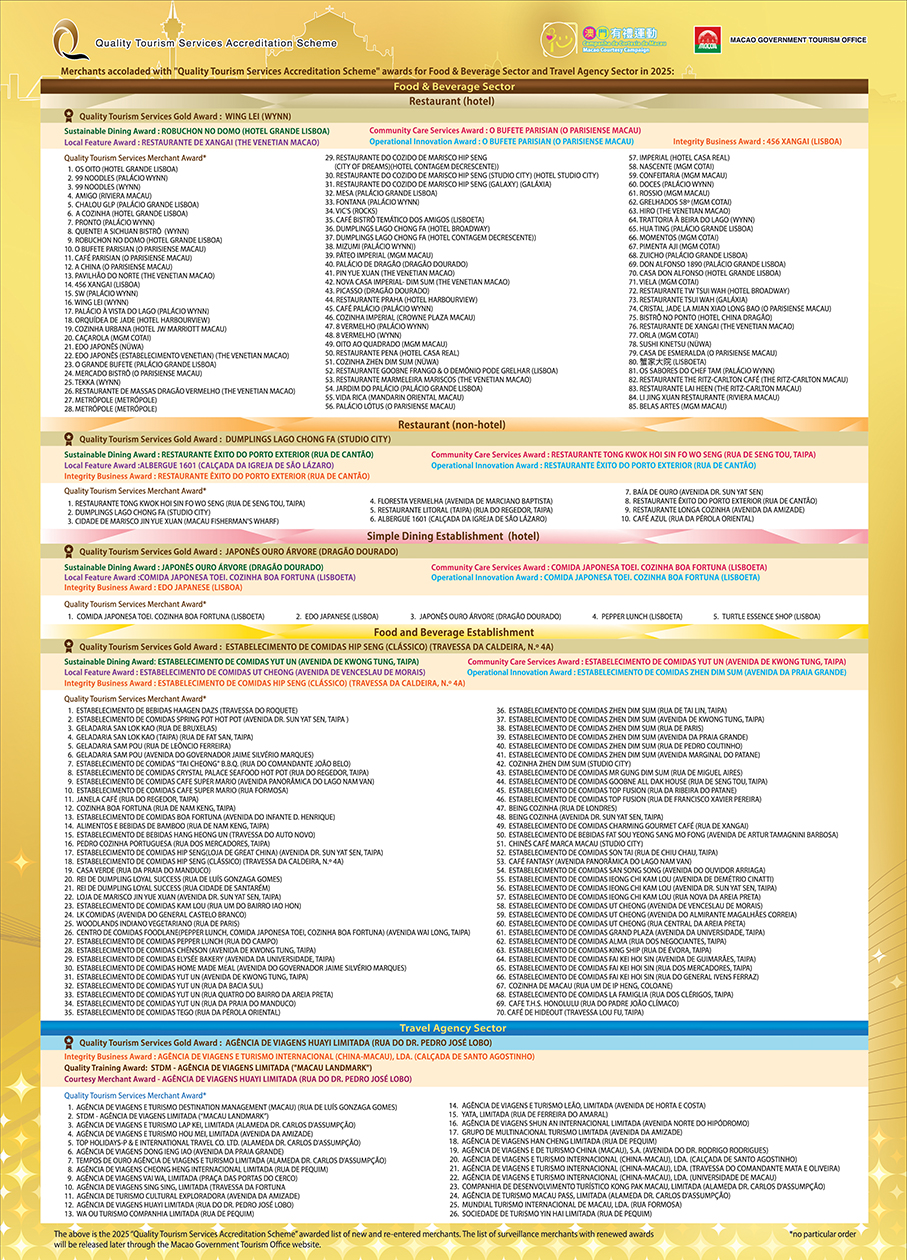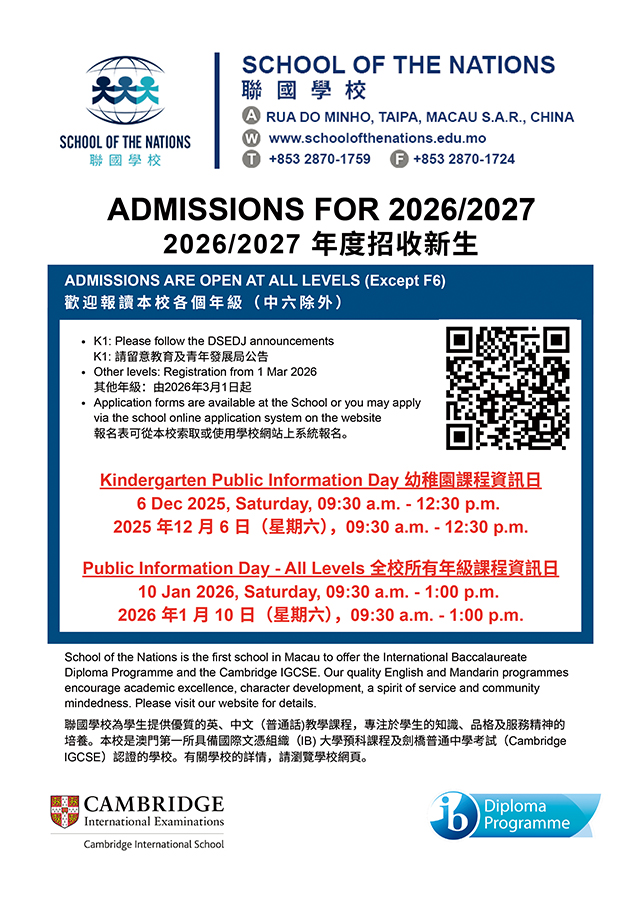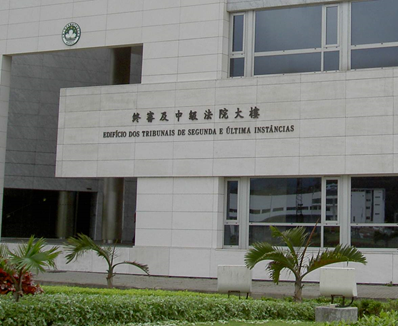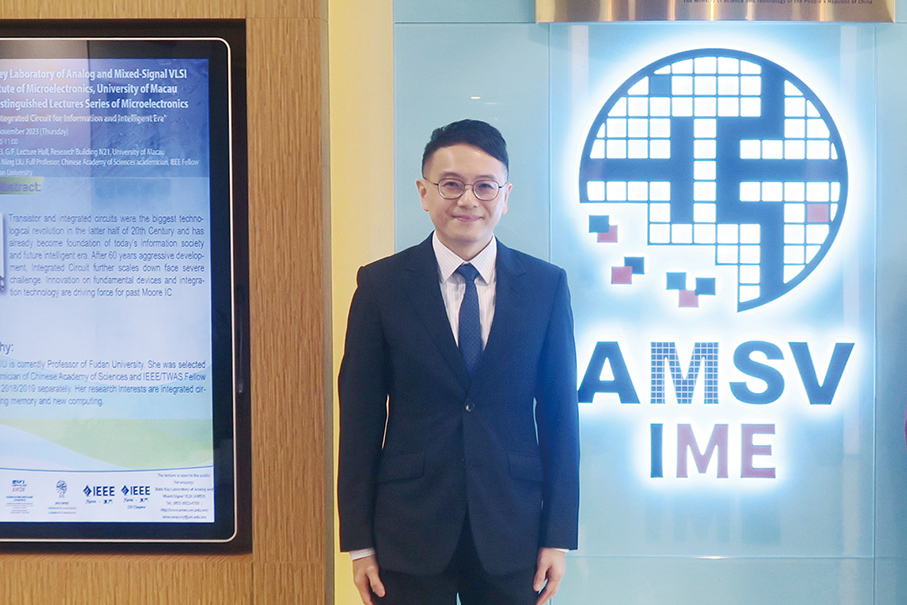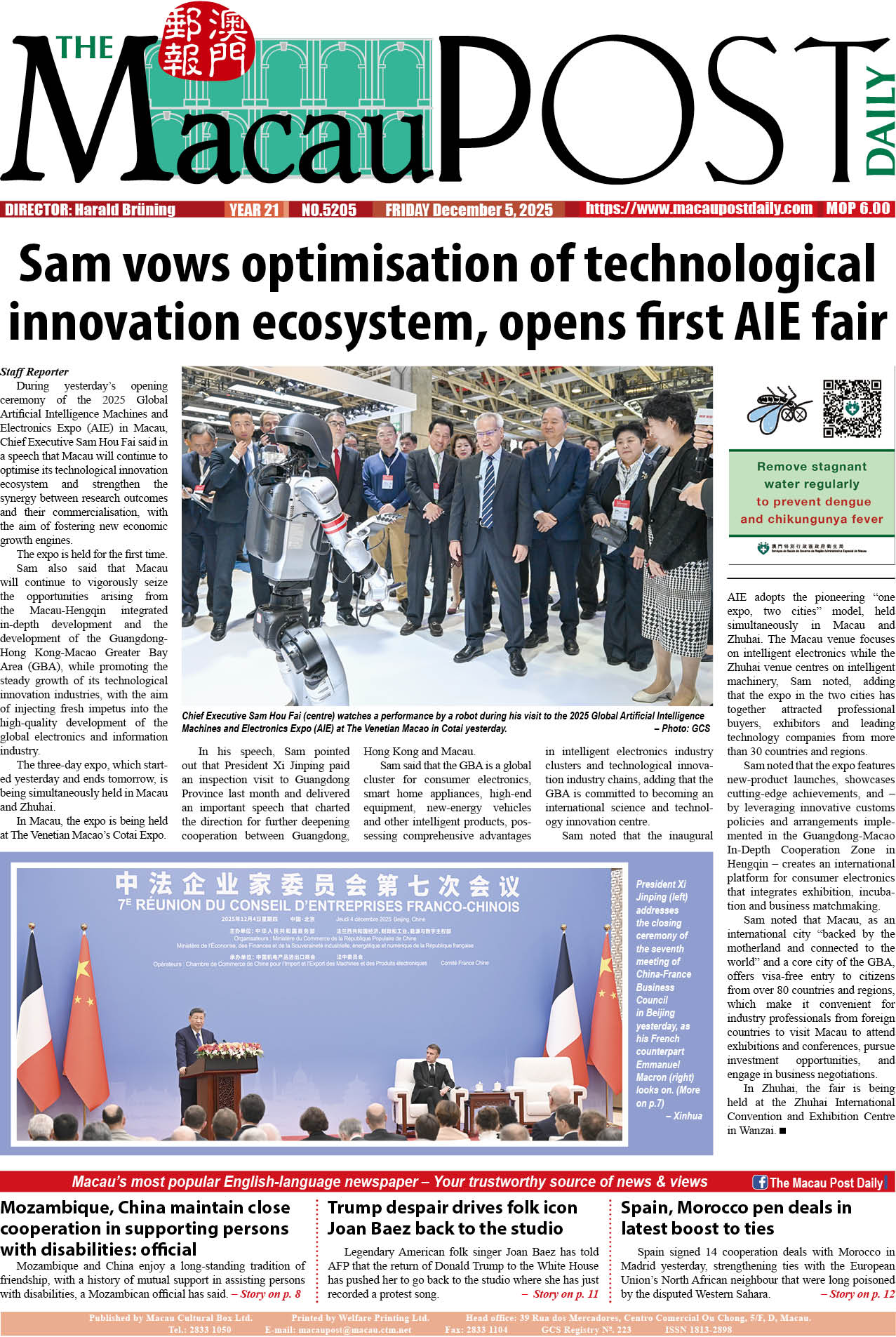An exhibition entitled “I have wiped the pen on the paper so often it seems like a drawing” by Portuguese artist Rui Rasquinho is being held in the main gallery of Casa Garden, co-organised by BABEL – Cultural Organisation and the Orient Foundation (FO), according to a statement provided by BABEL.
The exhibition is BABEL’s annual NEW VISIONS project, which is supported by the Cultural Affairs Bureau (IC).
Rasquinho told The Macau Post Daily last week that he was born in Lisbon in 1971 and moved to Macau 20 years ago. He is an artist and illustrator, living and working between Lisbon and Macau. He studied painting at the Faculty of Fine Arts of the University of Porto and Animation Cinema at the Calouste Gulbenkian Foundation in the Portuguese capital.
According to the statement, Rasquinho draws, paints and takes videos, researching possibilities between abstraction and figuration, the nature of practice and process as well as the porosity between various artistic disciplines. He has published his illustrations in magazines, newspapers and books in Portugal, Macau and Hong Kong. The current exhibition is Rasquinho’s research process and exploration of possibilities of drawing, the statement points out.
Rasquinho told The Macau Post Daily that the gallery’s entrance lobby displays leaflets, notebooks and xuan papers which he painted with imaginary and abstract lines, objects or stains, using different kinds of materials such as Chinese ink and pen. In the first hall of the gallery, he shows artwork such as plywood painted with acrylic and ink as well as an installation making use of construction materials presented as an artwork. The exhibits, according to Rasquinho, urge visitors to explore their own imagination and daily life.
According to Wikipedia, xuan paper, or Shuen paper or rice paper, is a kind of paper originating in ancient China used for writing and painting. Xuan paper is renowned for being soft and fine textured, suitable for conveying the artistic expression of both Chinese calligraphy and painting.
In the second hall of the gallery, Rasquinho said he asked the Orient Foundation to let him draw on the wall before its scheduled renovation. He turned the wall into an artwork. Drawing machines and installations made with construction materials aim to generate a play between light and shadow, white and black, life and death across the full range of tones, he said.
Rasquinho explained to The Macau Post Daily one of the drawing machines in the second hall. He said that he used drip bottles containing Indian ink and water connected to test tubes which let the fluid drip on a mattress with a microphone put underneath to record the sound of the drops. The sound is then connected to an amplifier and seismograph, thus creating sound similar to a cardiac pulse, Rasquinho said. In addition, the vibration of the sound is also shown in what looks like a heart rate monitor, urging visitors to think about life and death.
The exhibition runs until September 22 in the gallery of Casa Garden in Praça Luís de Camões. It is open daily from 10:30 a.m. to 6 p.m. except Mondays. Admission is free.
Casa Garden houses the local branch of the Lisbon-based Orient Foundation.
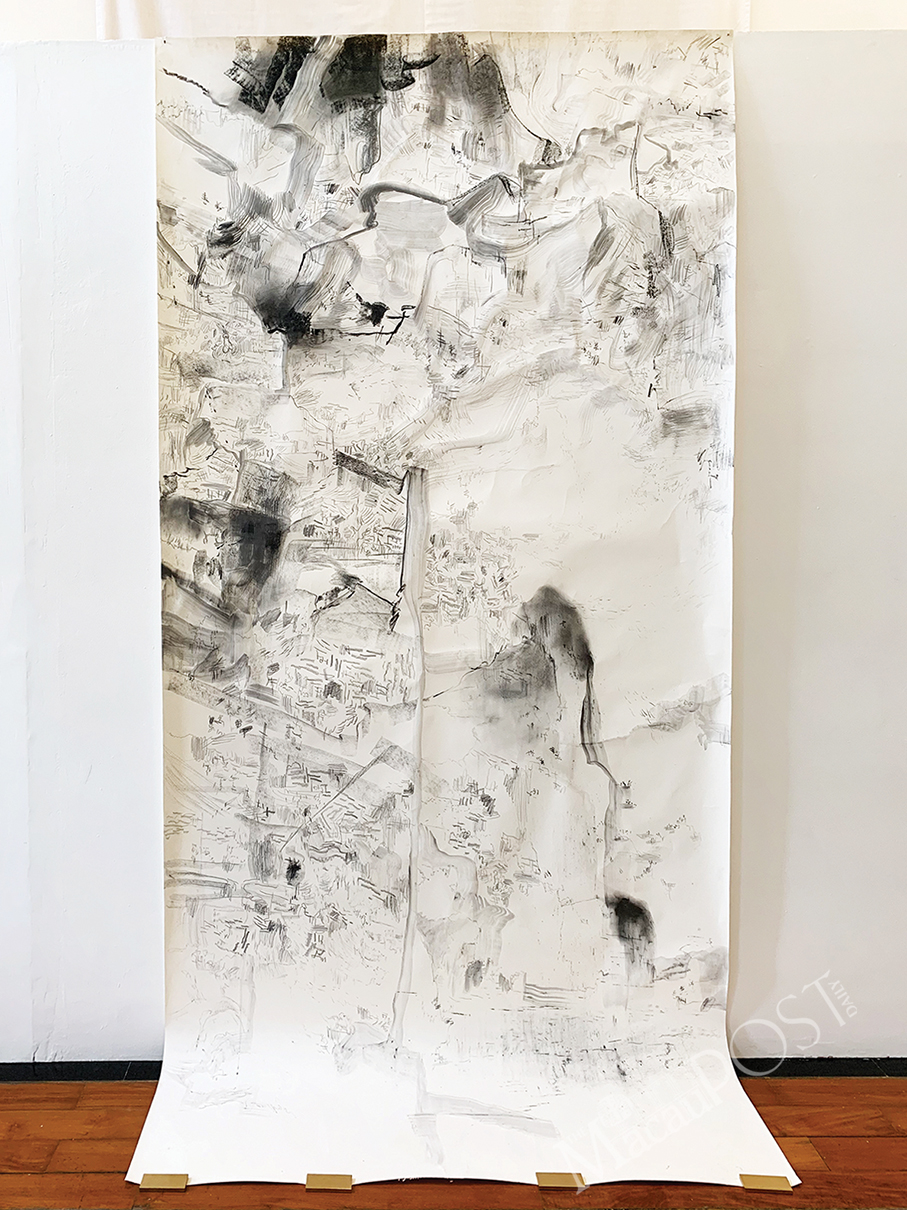
Abstract graphs and objects drawn with ink on xuan paper.

Rui Rasquinho poses next to one of his plywood paintings.
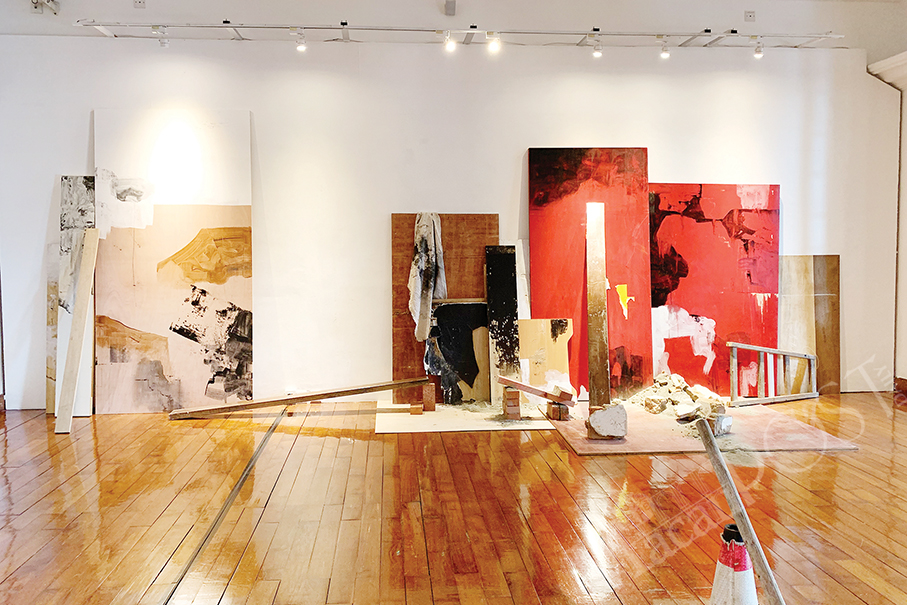
An installation of plywood drawn with acrylic paints displayed with construction materials.
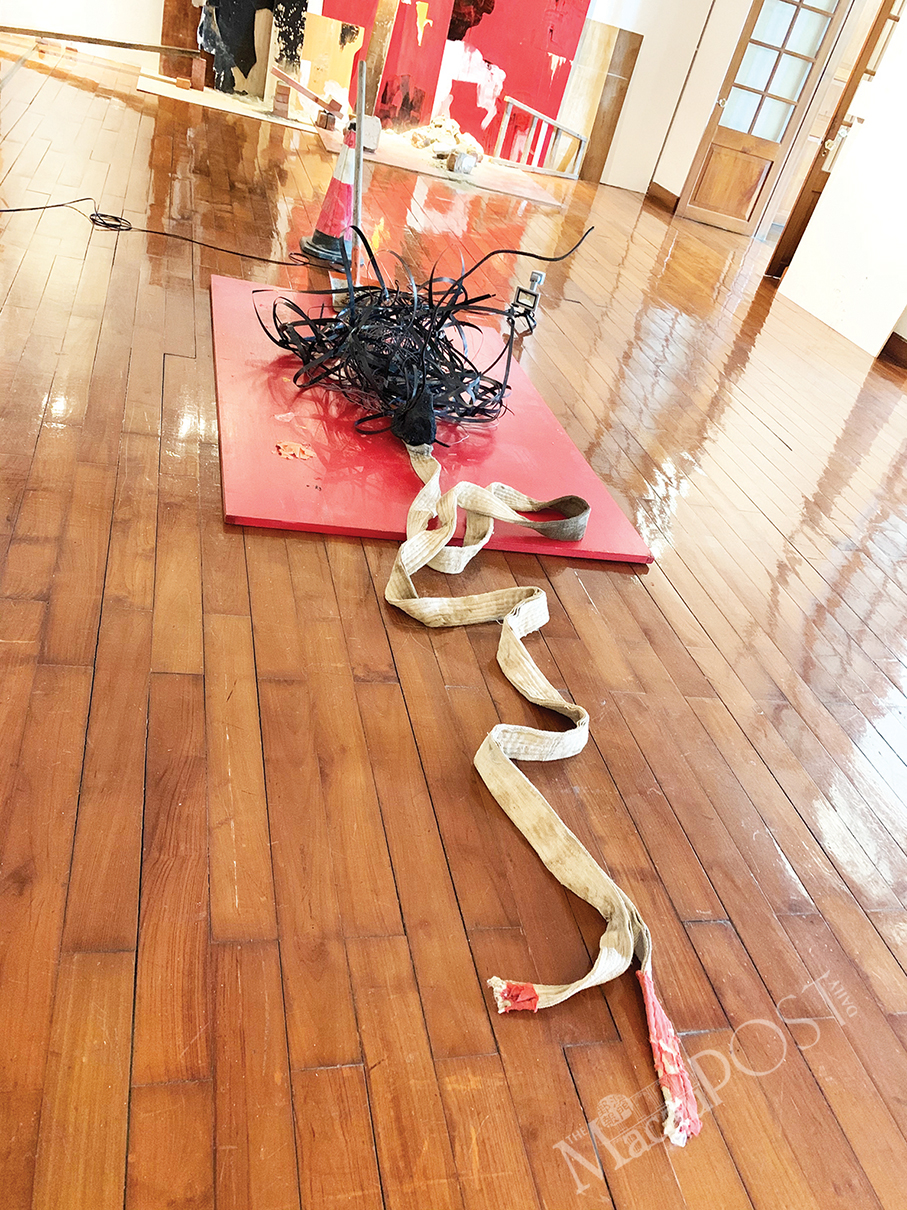
An installation making use of construction materials.
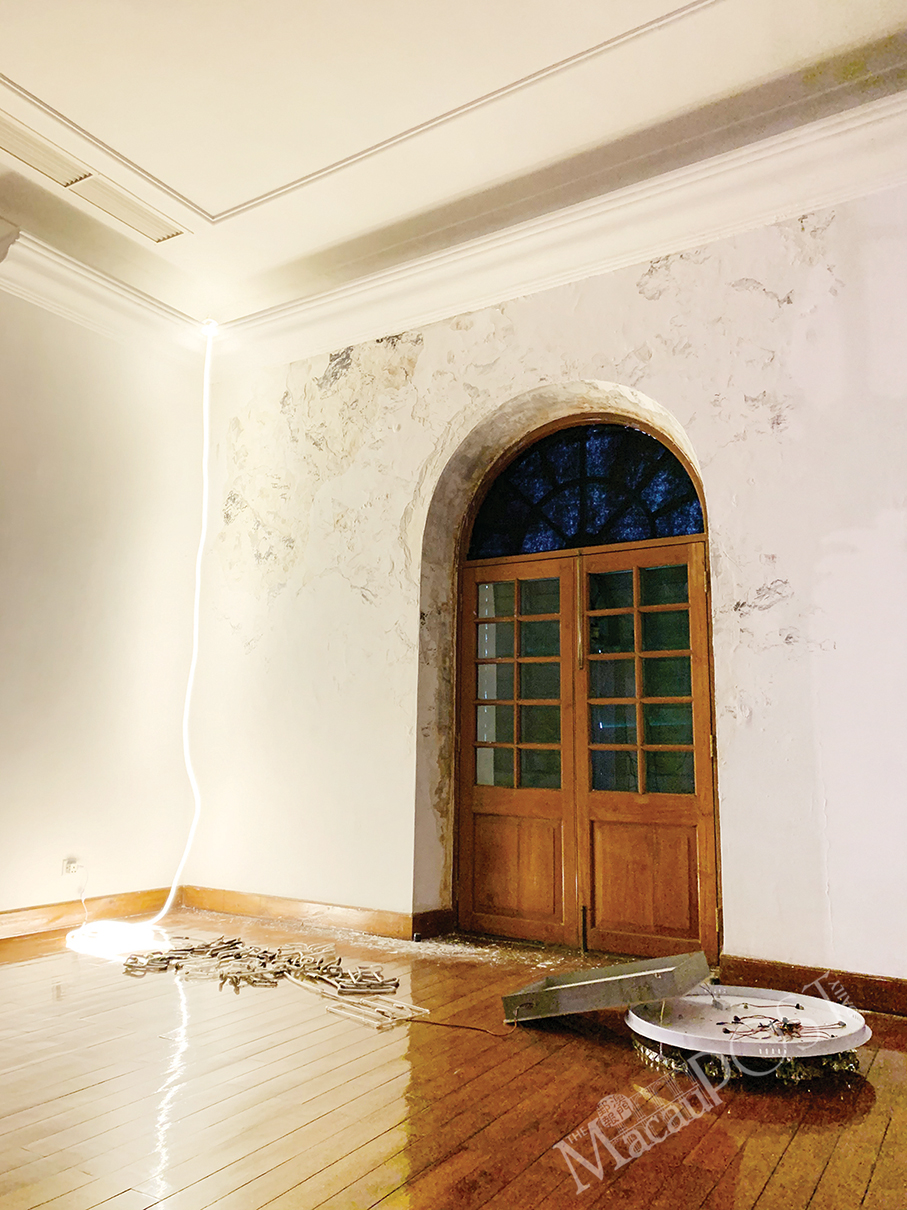
Drawings on the wall using elements of decay.
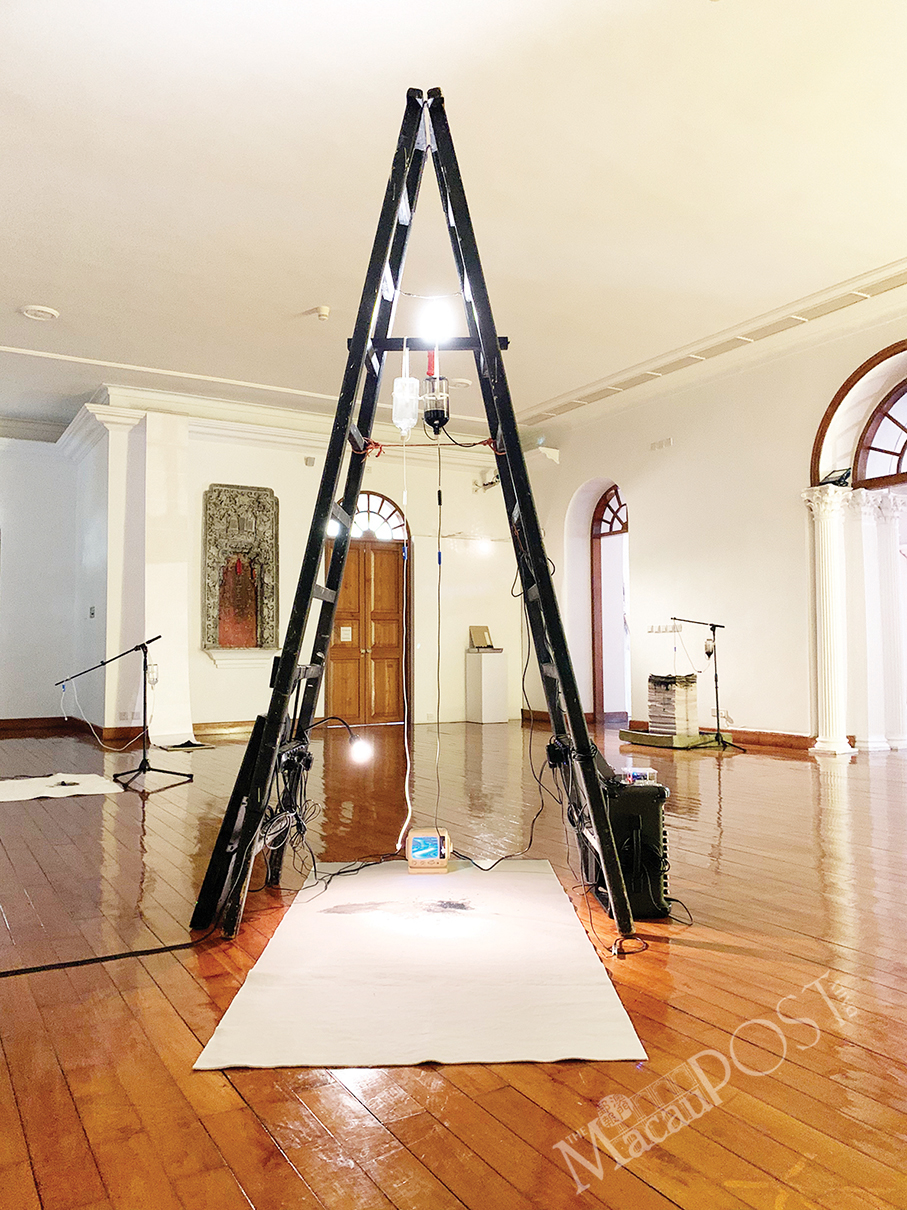
A drawing machine.
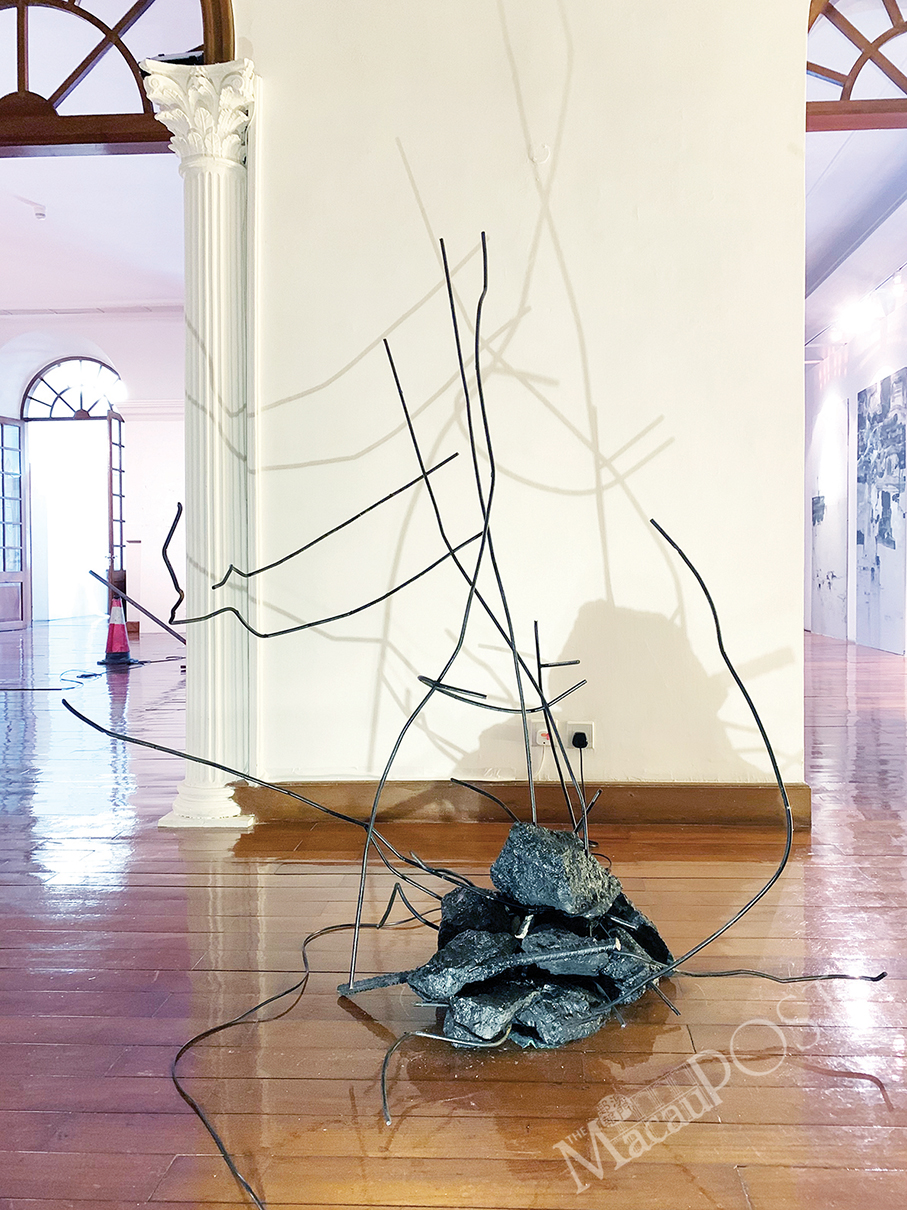
An installation making use of concrete and steel painted in black. The projection on the wall is also a drawing. Visitors are encouraged to come up with their own meaning of the installation. Photos: Camy Tam


